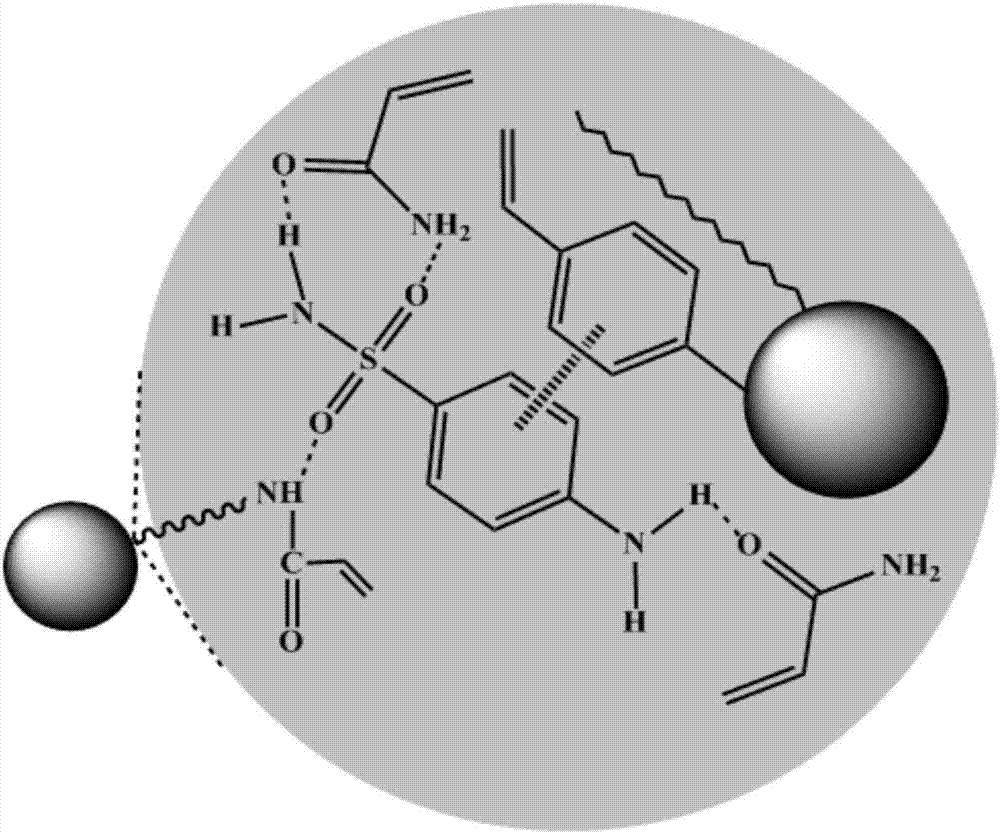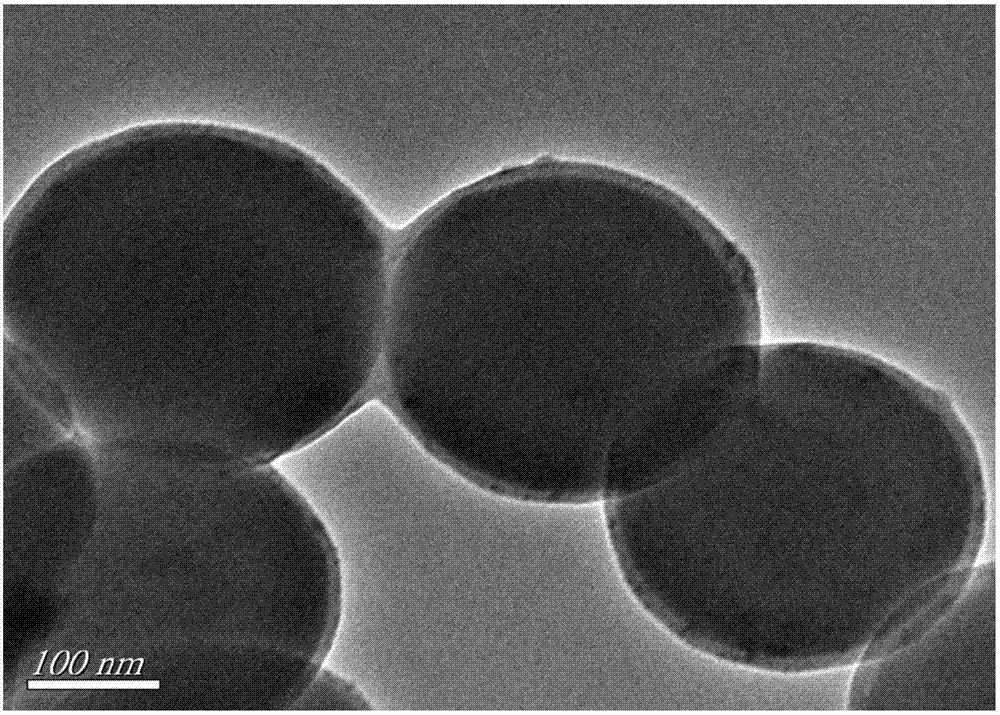High-specificity sulfanilamide imprinting quantum dot fluorescent sensor and preparation method thereof
A fluorescence sensor, high-specificity technology, applied in chemical instruments and methods, fluorescence/phosphorescence, instruments, etc., to achieve the effect of small steric hindrance, simple preparation method, and reduction of non-specific adsorption
- Summary
- Abstract
- Description
- Claims
- Application Information
AI Technical Summary
Problems solved by technology
Method used
Image
Examples
Embodiment 1
[0051] In this example, the highly specific sulfonamide-imprinted quantum dot fluorescent sensor uses amino- and vinyl-modified silica microspheres as the carrier, and octadecyl-p-vinylbenzyl-dimethylammonium chloride-modified cadmium telluride quantum dots It is a fluorescent material, sulfonamide is used as a template molecule, acrylamide is used as a functional monomer, ethylene glycol dimethacrylate is used as a crosslinking agent, and 2,2-azobisisobutyronitrile is used as an initiator, and it is prepared by precipitation polymerization made. Its preparation method specifically comprises the following steps:
[0052] Step 1, the preparation of amino- and vinyl-modified silica microspheres:
[0053] Step 101, adding 100 mL of ethanol and 15 mL of ammonia water to 40 mL of deionized water and stirring evenly to form a mixed solution, then adding 10 mL of tetraethyl orthosilicate to the mixed solution, and continuing to stir for 2 hours to obtain silica microspheres;
[005...
Embodiment 2
[0063] In this example, the highly specific sulfonamide-imprinted quantum dot fluorescent sensor uses amino- and vinyl-modified silica microspheres as the carrier, and octadecyl-p-vinylbenzyl-dimethylammonium chloride-modified cadmium telluride quantum dots It is a fluorescent material, sulfonamide is used as a template molecule, acrylamide is used as a functional monomer, ethylene glycol dimethacrylate is used as a crosslinking agent, and 2,2-azobisisobutyronitrile is used as an initiator, and it is prepared by precipitation polymerization made. Its preparation method specifically comprises the following steps:
[0064] Step 1, the preparation of amino- and vinyl-modified silica microspheres:
[0065] Step 101, adding 120 mL of ethanol and 25 mL of ammonia water to 60 mL of deionized water and stirring evenly to form a mixed solution, then adding 10 mL of tetraethyl orthosilicate to the mixed solution, and continuing to stir for 2 hours to obtain silica microspheres;
[006...
Embodiment 3
[0075] In this example, the highly specific sulfonamide-imprinted quantum dot fluorescent sensor uses amino- and vinyl-modified silica microspheres as the carrier, and octadecyl-p-vinylbenzyl-dimethylammonium chloride-modified cadmium telluride quantum dots It is a fluorescent material, sulfonamide is used as a template molecule, acrylamide is used as a functional monomer, ethylene glycol dimethacrylate is used as a crosslinking agent, and 2,2-azobisisobutyronitrile is used as an initiator, and it is prepared by precipitation polymerization made. Its preparation method specifically comprises the following steps:
[0076] Step 1, the preparation of amino- and vinyl-modified silica microspheres:
[0077] Step 101, adding 110 mL of ethanol and 20 mL of ammonia water to 50 mL of deionized water and stirring evenly to form a mixed solution, then adding 10 mL of tetraethyl orthosilicate to the mixed solution, and continuing to stir for 2 hours to obtain silica microspheres;
[007...
PUM
| Property | Measurement | Unit |
|---|---|---|
| size | aaaaa | aaaaa |
Abstract
Description
Claims
Application Information
 Login to View More
Login to View More - R&D
- Intellectual Property
- Life Sciences
- Materials
- Tech Scout
- Unparalleled Data Quality
- Higher Quality Content
- 60% Fewer Hallucinations
Browse by: Latest US Patents, China's latest patents, Technical Efficacy Thesaurus, Application Domain, Technology Topic, Popular Technical Reports.
© 2025 PatSnap. All rights reserved.Legal|Privacy policy|Modern Slavery Act Transparency Statement|Sitemap|About US| Contact US: help@patsnap.com



